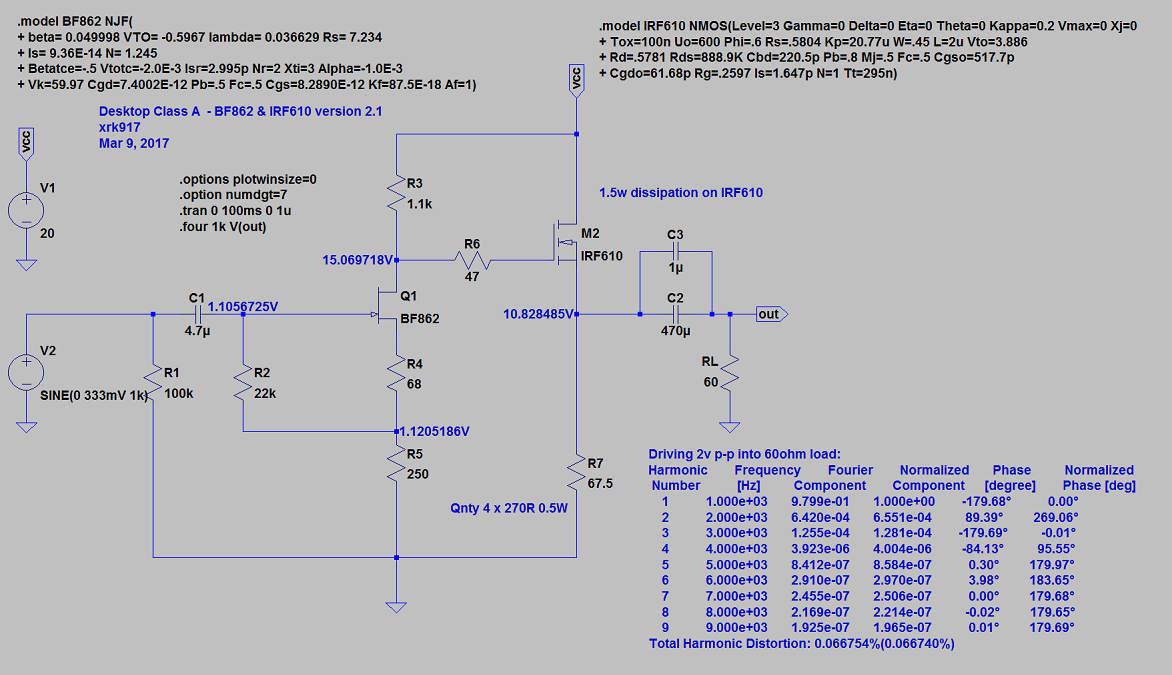Elna Silmic II vs. Nichicon Muse KZ
I did some fun listening tests with different capacitor combos in this amp. Bypassing with a 1/10 value top shelf electrolytic does quite a lot for the sound--much more than a 1/100 value film!
After several hours listening back and forth between the 47uF Silmic II and Muse KZ on output bypass duty in the PCA amp, I can say with confidence that the two caps sound quite distinct in this application. Different beasts altogether.
I am not auditioning these caps on their own. They are bypassing my existing 470uF Nichicon KA output caps, so synergy is likely a factor. Also, the Silmic has the slight advantage of a 35V rating vs. the 25V Muse, but the caps are the same capacitance and have identical physical dimensions, so I feel the comparison is reasonable. I used both my xDuoo X3 DAP and Echo Audiofire soundcard as sources, using the Pocket Class A to power my Sennheiser HD598 headphones and also as a preamp, feeding my Tripath-powered Axiom Audio M3 speakers.

 Silmic
Silmic
As I explained in my earlier post, the Silmic tames the upper mids and low treble in a very smooth and musical way, by “damping” the resonances of the upper frequencies. The easiest way I can describe this sound is to say that notes with a lot of information in the midrange and low treble seem to buzz less and decay faster, lending a certain sense of control and wonderful transparency, as notes pop up and then sink rapidly into a dark background. This is nice and easy on the ears, but I notice that percussion can sound ever-so-slightly hollow and vocals a tad recessed in the mids as a result…smooth but perhaps harmonically incomplete. There is nice air on top, above the threshold of this effect. Synth pads emerge glassy and ghostlike from a cool, serene atmosphere in "Monument" by Robyn. Somehow this squeaky clean sound adds an amazing depth to the soundstage. I can listen "in" to the music more, and I can hear Amos Lee moving closer and further from the microphone as he sings "Bottom of the Barrel", creating a 3-D soundstage. What's more…his foot stomps in the beginning of the song sound convincingly deep. There is tight control, speed, and clarity in the bass registers, with superb weight all the way down to sub-bass. With complex and difficult material, like the rapid dynamic cliffs in the Futuristics remix of "Moonshine" by Bruno Mars, the Silmic keeps its composure, allowing the necessary breathing room in the mix for instrument separation and good dynamics.
Muse
The Muse lets everything through. In fact, my amp is subjectively louder with them in place. But volume isn’t the main difference…even if I dial it back, I can hear it. It lifts a veil and adds warmth. Presence, detail, and dynamics are off the chain. The snare drum in “The Bird” by Anderson .Paak simply hits faster and harder, with immediacy and sharp coherence. On top of that, I can now follow the long decay of its reverb tail all the way back down to the noise floor. Micro-details like the triangle “ting” in Daft Punk’s “Give Live Back to Music” come flying out of the mix…whereas I didn’t even notice them with the Silmic. Cymbals and chimes have a hyper-realistic timbre, with all their metallic harmonics beautifully apparent. Unfortunately this tizz carries over into vocal peaks and other sounds as well. While not the cleanest ever, the vocals are awesomely fun…in your face in a most engaging way with the KZ. Voices pop out of the mix with midrange presence, detail, and unabashed sparkle. The fat analog synth lead of Miike Snow's "Black and Blue" rips through the air like electricity…amazing. Bass is powerful, with more overall quantity than the Silmic, but sadly it is a bit less extended, and muddy in comparison. Every sound drips with texture and commands attention…it's like the notes are singing directly into my head. This can come off as compressed and fatiguing with complex material, but with simple arrangements, like Norah Jones' "Burn", the immediacy and realism of her performance is stunning.
Think of it this way:
The Silmic II is Gandalf's sword, Glamdring. Meticulously crafted, it has the heft to deliver solid bass thump and its sound is honed perfectly smooth, delivering balance and extension. Its enchanted blade cooly illuminates musical space, yielding a cool and calm atmosphere, even in the midst of musical chaos.
The Muse KZ is Kylo Ren's lightsaber. Red-hot, it hums with extreme harmonic texture and deals electrifying mids and treble. Every last detail cuts effortlessly through the mix with speed and warmth. But its brute resolving power can sound a touch unrefined (i.e. more distortion), and deep down, it's a little unsure in the bass.
I have actually had a hard time deciding which one I like more. They both bring out different nuances. My musician buddy who had a listen said he preferred vocals on the KZ but overall presentation with the Silmic. He joked that he wants me to build him an amp with a switch to toggle between caps! By the way, the green caps in the second photo are Muse ES bipolars. I left them out because they really didn't do anything audible as bypass caps.

























